
TNU Journal of Science and Technology
229(03): 168 - 175
http://jst.tnu.edu.vn 168 Email: jst@tnu.edu.vn
“THE TALE OF KIEU” – THE CHOICE OF VIETNAM VALUES
Pham Van Hoa*
Dalat University
ARTICLE INFO
ABSTRACT
Received:
28/11/2023
The purpose of this paper is to explain why an ordinary literary source
has become the pinnacle of Vietnamese literature, elevated as a
celebration of the national traditional cultural characteristics of Vietnam.
This study focuses on the ideological transformation and adaptation of a
scholar and a beauty novel into a Nom poetry. Based on national culture,
the traditional six-eight-meter genre, and Nom script, a special literary
work was born, reflecting many traditional cultural characteristics of
Vietnam. The study shows how the transformation from a “normally
average” literary work to a cultural characteristic symbol of Vietnamese
national culture has played out. The article employs several methods such
as analysis, synthesis, comparison, typological research, literature, and
culture interdisciplinary methods, and a systematic approach. The paper
sheds light on the adaptation of a literary work reaching the pinnacle of
Vietnamese medieval written literature in the context of the regional and
Vietnam‟s particular traditional culture through decoding the creative
process of Nguyen Du‟s The Tale of Kieu - a symbol of Vietnamese
national culture. The paper shows how a literary work has become a
national literary peak and the image of The Tale of Kieu becomes a
symbol of national consciousness, the spirit of cultural nationalization.
Revised:
02/02/2024
Published:
02/02/2024
KEYWORDS
The Tale of Kieu
National identity
Creation
Value
Choice
“TRUYỆN KIỀU” – SỰ LỰA CHỌN GIÁ TRỊ VIỆT NAM
Phạm Văn Hóa
Trường Đại học Đà Lạt
THÔNG TIN BÀI BÁO
TÓM TẮT
Ngày nhận bài:
28/11/2023
Mục đích của bài viết này là lý giải vì sao mà một bản nguồn văn học bình
thường đã trở thành một tác phẩm đỉnh cao của văn học Việt Nam, được
nâng tầm như một sự tôn vinh văn hóa truyền thống dân tộc. Nghiên cứu
này tập trung vào sự chuyển hướng tư tưởng và chuyển thể của một tác
phẩm tiểu thuyết tài tử giai nhân thành một tác phẩm truyện thơ Nôm. Trên
cơ sở văn hóa dân tộc, thể thơ lục bát truyền thống và chữ Nôm, một tác
phẩm văn học đặc sắc ra đời phản ánh nhiều nét văn hóa truyền thống dân
tộc Việt. Nghiên cứu cho thấy sự biến đổi từ một tác phẩm bình thường trở
thành một biểu tượng của văn hóa Việt Nam đã được diễn ra như thế nào.
Bài viết sử dụng một số phương pháp như: phương pháp phân tích, tổng
hợp, đối chiếu, hệ thống, loại hình, liên ngành văn học – văn hóa. Bài viết
làm sáng tỏ quá trình một tác phẩm văn học đạt đến đỉnh cao của văn học
viết trung đại Việt Nam trong bối cảnh lịch sử văn hóa khu vực và Việt
Nam thông qua việc giải mã quá trình sáng tạo Truyện Kiều của Nguyễn
Du - biểu tượng của văn hóa dân tộc Việt Nam. Bài viết cho thấy một tác
phẩm văn học đã trở thành một đỉnh cao văn học dân tộc như thế nào và
hình tượng Truyện Kiều trở thành một biểu tượng của ý thức dân tộc, tinh
thần khẳng định văn hóa dân tộc.
Ngày hoàn thiện:
02/02/2024
Ngày đăng:
02/02/2024
TỪ KHÓA
Truyện Kiều
Ý thức dân tộc
Sáng tạo
Giá trị
Lựa chọn
DOI: https://doi.org/10.34238/tnu-jst.9300
*Email: hoapv@dlu.edu.vn

TNU Journal of Science and Technology
229(03): 168 - 175
http://jst.tnu.edu.vn 169 Email: jst@tnu.edu.vn
1. Introduction
A New Lament for a Broken Heart (Đoạn trường tân thanh) by Nguyen Du, known by
Vietnamese people as The Tale of Kieu, is a poetic story comprised of 3254 lines of poetry, i.e.,
1627 verses in the traditional six-eight meter. The plot is based on The Tale of Kim Van Kieu
(Kim Vân Kiều truyện) by a Chinese writer known by the pen name Thanh Tam Tai Nhan.
Considered a classic work of Vietnamese medieval literature and culture [1] - [2], Nguyen Du‟s
Tale of Kieu has been cherished by a large number of Vietnamese people since its inception and
revered by many ancient writers. The Tale of Kieu has been a great passion for hundreds of years,
capturing the hearts of millions of people, and will continue to be so. This paper traces the
transformation of what was once an “ordinary” literary work into a typical masterpiece,
considered a classic, offering a glimpse into Vietnamese culture and society. It outlines the
gradual transformation in its reception and adaptation [3, p.481], [4, p.2217].
Over the past 200 years, The Tale of Kieu has deeply influenced the emotions and souls of
the Vietnamese people [5] - [6]. A folk simile goes: “Love what, love to play a card game/
Love Ho Bon horse, love Thuy Kieu Nom poem” (Mê gì, mê đánh tổ tôm/ Mê ngựa Hộ Bổn, mê
nôm Thúy Kiều). Consequently, Nguyen Du has become a distinguished figure in world
culture. To this day, the title A New Lament for a Broken Heart remains a subject of debate [7,
p.12], but The Tale of Kieu continues to stand as the foremost masterpiece of Vietnamese
classical literature. Kim Thanh Than, a Chinese writer and theorist during the Qing dynasty,
disapproved of Thanh Tam Tai Nhan‟s writing of The Tale of Kim Van Kieu, stating that “the
writing was rambling like flood water spreading, not flowing in a stream” [8, p.10], revealing
the perceived value of The Tale of Kim Van Kieu by Thanh Tam Tai Nhan at the time [9, p.3],
[10, p.99], [11, p.6], [12, pp.275–276], [13], [4]. As of now, there has not been a
comprehensive study on the factors that shed light on the creative process of The Tale of Kieu
within the context of Vietnamese specifics and humanity. This study aims to decipher the core
elements of The Tale of Kieu‟s success.
2. Methodology
The article utilizes main research methods such as analysis, synthesis, comparison, and the
interdisciplinary method of literature and culture to clarify the ideological transformation and
adaptation from a “scholar and beauty” novel by an anonymous Chinese author, published in
late seventeenth century China, into Nom poetry - the traditional six-eight meter genre of the
Vietnamese national poetry. This created a special literary work that reflects many traditional
cultural characteristics of Vietnam, its people, and the great Vietnamese national poet. It also
delves into the ideological transformation and adaptation of The Tale of Kieu (Nguyen Du),
from being a “normally average” literary work to becoming a symbol of Vietnamese national
cultural characteristics. From the interdisciplinary perspective of literature and culture,
dialectical materialism elucidates the fundamental causes of these differences, including
historical era, Vietnamese culture, subject matter, and the author‟s style, shedding light on the
adaptation of a literary work reaching the pinnacle of Vietnamese medieval written literature
within the context of Vietnam‟s specific traditional culture. The paper further illuminates the
importance of acculturation as a significant feature of Vietnamese literary-culture research,
reflecting the development of Vietnamese culture and literature, as well as the connotations of
the era.
To understand The Tale of Kieu’s place in the context of Vietnamese values, from a systemic
viewpoint, we aim to examine Nguyen Du‟s works, including those in the Han script [14], to
comprehend how his thoughts are expressed, and then compare them with the fact that he
modified The Tale of Kim Van Kieu into The Tale of Kieu. After all, an author's works always
possess a unity of thought.

TNU Journal of Science and Technology
229(03): 168 - 175
http://jst.tnu.edu.vn 170 Email: jst@tnu.edu.vn
3. Results and Discussion
3.1. Historical creation of the story
Vuong Thuy Kieu was a real person in the Ming Dynasty mentioned alongside Tu Hai in
official history books such as the History of the Ming Dynasty – Chronicle (Minh sử - Thế Tông
bản kỷ), Ming Shilu-Shìzōng Shilu (Minh thực lục - Thế Tông thực lục), and Tru Hai Border Map
(Trù hải đồ biên) (Ho Ton Hien - General Governor of the Ming Dynasty) [12], [13], [4]. Chinese
folk compositions, most evidently in The Tale of Vuong Thuy Kieu, describe the chronicle of The
Beginning and End of Suppressing Xuhai (Kỷ tiễu Từ Hải bản mạt) (Mao Khon), which was
considered the earliest record of the legend of Vuong Thuy Kieu and Tu Hai. Subsequently,
Vuong Thuy Kieu became the central figure in numerous novels and several dramas, such as The
Gibbon Squeaks Four Times (Tứ Thanh Viên) (Tu Van Truong), Ho Phach Chuy (Hổ phách
chủy) (Diep Tri Phi), Song Thuy Vien (Song Thúy viên) (Ha Binh Hoanh) [15]. Several other
works like Vuong Kieu Nhi (Vương Kiều Nhi) (Vuong The Trinh), Ngu So Tan Chi (Ngu Sơ tân
chí) (Truong Trieu), Bai Thuyet (Bại thuyết) (Tong Khoi Phung), The Tale of Vuong Thuy Kieu
(Vương Thúy Kiều truyện) (Du Hoai), The Tale of Ly Thuy Kieu (Lý Thúy Kiều truyện) (Doi Si
Lam) and The Tale of Vuong Thuy Kieu (Vương Thúy Kiều truyện) (Ho Khoang), all revolved
around the love and hatred involving the trio of Tu Hai - Vuong Thuy Kieu - Ho Ton Hien.
Vuong Thuy Kieu soon became the central figure in many romantic novels, such as Ho Thieu
Bao Binh Oa Chien Cong (Hồ Thiếu Bảo bình Oa chiến công) (Chu Tiếp), Sinh Bao Hoa Ngac
an, Tu Ta Tu Hai Nghia (Sinh báo Hoa Ngạc ân, tử tạ Từ Hải nghĩa) (Mong Giac Dao Nhan),
and Thu Ho Khau (Thu hổ khâu) (Vuong Lung), etc. Notably during the Qing Dynasty, there
were works like The Tale of Kim Van Kieu (Thanh Tam Tai Nhan) and Thu Ho Khau (Vuong
Lung) [16], which reflected the wandering journey of Thuy Kieu as a courtesan, revealing social
realities such as lawless and corrupt functionaries and moral decay. The authors also expressed
agreement and entrusted the ideal of a savior in the protestant character Tu Hai. Generally, there
are three similarities in the above-mentioned works. First, they affirm Vuong Thuy Kieu as a
renowned courtesan, advising Tu Hai to submit to the court. Second, the court did not keep its
promises, acting inconsistently and deceitfully, and breaking their words. Third, before Vuong
Thuy Kieu - a female civilian, Ho Ton Hien, the legate appeared cunning, petty, and rude. As
complex as her background and behavior are, the end of Thuy Kieu‟s life has given rise to
various theories, all of which are charming. These stories all adorn the character of Vuong Thuy
Kieu, honoring the image of women in society [17, p.16], [18, p.177]. Most of the works focus on
the love affair and tragic ending between a reputed bandit and a famous courtesan, exploring
different directions. Kieu‟s life has yet to prove the idea of Destiny and Cause & Effect. This
story did not captivate literary critics and never gained recognition in the realm of Chinese
literature. However, it was widely circulated with several printed editions and was performed on
stage in China during the late seventeenth and eighteenth centuries. It was also translated into
Manchu and, in the mid-eighteenth century, into Japanese. Moreover, it was read by Vietnamese
people [12, pp. 275–276], [13], [19], [4]. Upon arrival in Vietnam, the character Vuong Thuy
Kieu underwent a complete makeover: after the removal of several parts and the alteration of
many details, the story became more intriguing and humane; the character‟s personality became
more consistent, and her behavior more balanced and lenient [2]. Of course, from The Tale of
Kim Van Kieu to The Tale of Kieu, there have been many other stories!
3.2. How Kim Van Kieu came to Vietnam and Nguyen Du
A remarkable literary work first reveals itself in the art of words. However, if the value of a
literary work and its dissemination are solely expressed on the surface of language without depth
in culture, it cannot withstand the test of time. When discussing the history of creation, we aim to
shed light on three points: the context, the people, and the art form. To address the context, we

TNU Journal of Science and Technology
229(03): 168 - 175
http://jst.tnu.edu.vn 171 Email: jst@tnu.edu.vn
will present two viewpoints. The first is the tributary relationship (involving bibliographic
exchange), commonly undertaken by functionaries who visited China to obtain books or received
books as gifts to bring back home, etc. Conversely, Chinese individuals who journeyed to
Vietnam brought with them Chinese cultural bibliographies [20, pp.261-283]. Secondly, the
Confucian court examination system served as the recruitment system for functionaries in the
feudal state of Vietnam, as well as in other feudal East Asian countries. Vietnam‟s examination
system was heavily influenced by China, leading to Literature in the Chinese style becoming the
most recognized and effective standard for the selection of functionaries. The examination
content in Vietnam was similar to that of China [21]. It is crucial to note that the Han script (or
Chinese script) was part of the exams, and Confucian ideology (three moral bonds and five
cardinal virtues) was deemed essential for gentlemen to study [22].
Regarding Nguyen Du, the author, who is he? Why did he choose The Tale of Kim Van Kieu
by Thanh Tam Tai Nhan to edit? Had this work been adapted by someone else, our The Tale of
Kieu might not exist today. To learn more about Nguyen Du and his works, we refer to historical
documents. The True Chronicles of Greater Vietnam (Đại Nam thực lục) from the Historical
Academy of the Nguyen Dynasty wrote about Nguyen Du: the son of Duke Xuan of Le Dynasty
(1428-1789), Nguyen Nghiem. Du grew up in a family with a literary tradition; his mother, noted
for her singing and poetry composition, was his father‟s third wife. Nguyen Du declined to serve
in the Tây Sơn administration and returned to his native village for ten years… [23, p.650], [24,
p.237]. In 1813, Nguyen Du traveled to China as a missionary. With his profound knowledge of
Chinese script and classical Chinese literature, he found The Tale of Kim Van Kieu very intriguing.
“A few years after returning home, he translated into Nom poetry in the traditional six-eight meter
genre of the Vietnamese national” [5, p.82]. Nguyen Du‟s works include Han literary works such
as Thanh Hien’s poetry collection (Thanh Hiên thi tập), Singing Oddly while in Central Vietnam
(Nam Trung tạp ngâm), Random notes on the way to China (Bắc hành tạp lục), and Nom works
including Borrowing Young Hat-Guildsmen’s Word (Thác lời trai Phường Nón), A Requiem for
All Ten Classes of Sentient Beings (Văn tế thập loại chúng sinh), and The Tale of Kieu, among
others. Nguyen Du seems to possess a very strong personality. During his time as a functionary, he
always maintained a humble attitude towards his superiors and appeared to be perpetually
melancholic. When seriously ill, he declined medication and passed away quietly [25, p.292], [26].
In addition to Nguyen Du‟s The Tale of Kieu which we are all familiar with, there are many
other works that feature the story of Vuong Thuy Kieu [6, p.169], [1, p.10], [26]. Some of these
use The Tale of Kim Van Kieu by Thanh Tam Tai Nhan as the source (original text) for
composition. In these cases, the derivative works are a result of recomposition, such as The Tale
of Kieu (also known as The Tale of Thuy Kieu, The Tale of Kim Van Kieu, A New Lament for a
Broken Heart) by Nguyen Du; Kim Van Kieu Notes (Kim Vân Kiều lục) by Pham Quy Thich;
Thanh Tam Tai Nhan’s Poetry Collection (Thanh Tâm Tài Nhân thi tập) by Tran Bich San, Chu
Manh Trinh; Copies of the Articles of the Ancient and Brilliant Kings Mild Mandarin to Praise
The Tale of Kieu/ or Thanh Tam Tai Tu’s Story (Thanh Tâm Tài tử cổ kim minh lương đề vịnh
tập biên) by Minh Menh, Tu Duc, Nguyen Khuyen [27, p.398]. Furthermore, there are other
works that use Nguyen Du‟s The Tale of Kieu to recompose, such as Ca Phả (anonymous); Kim
Van Kieu Han Script Dien Am Ca (Kim Vân Kiều Hán tự diễn âm ca) by Le Du; Kim Van Kieu’s
Drama (Kim Vân Kiều trò) by an anonymous author; Kim Van Kieu’s Fu (Kim Vân Kiều phú) by
an anonymous author; Kim Van Kieu’s Notes Translate (Kim Vân Kiều truyện diễn tự) by
Nguyen Kien, who translated the full version of Nguyen Du‟s Tale of Kieu into Han poetry in the
six-eight meter format [28, p.40]. For over half a century, numerous Chinese researchers have
dedicated considerable effort and intellect to researching and translating this work into Chinese.
The most notable translators are Hoang Dat Cau [29], [30], whose translation is considered as
“preliminary” and La Truong Son [30], [31], followed by Trieu Ngoc Lan [30], [32]. It is
somewhat paradoxical yet interesting to note that the Han script was translated into Nom script

TNU Journal of Science and Technology
229(03): 168 - 175
http://jst.tnu.edu.vn 172 Email: jst@tnu.edu.vn
(Vietnamese demotic script), and then the Nom script was translated back into Han script, a
unique feat in literary history. However, it is understandable as Nguyen Du, after relying on The
Tale of Kim Van Kieu (Thanh Tam Tai Nhan), transformed the work into a masterpiece, which, in
terms of literary art, has many more outstanding aspects than the original version - a romance
novel which, in modern parlance, is considered “just average” [30]. The history of translating The
Tale of Kieu back into Han script is even more intriguing considering that it was once
accomplished by an anonymous Confucian during Tu Duc‟s reign (1848-1883), resulting in a
work called Kim Van Kieu Notes [33]. In general, while all the translations, besides achieving
the purpose of cultural exchange to introduce the masterpiece The Tale of Kieu to the Han script
community, hardly match the same artistic value as the “original” Nom version by Nguyen Du.
The following Han translations are noteworthy: Thuy Kieu Poetry Collection (Thúy Kiều thi tập)
by various authors, featuring 36 poems in 26 pages documenting Kieu from her first encounter
with Kim Trong to their reunion. Thuy Kieu So Ngo Canh Huong Thi (composed by Nguyen
Thuc Dinh, Bachelor of Le Dynasty) portrays 30 poems from Kieu‟s first meeting with Kim
Trong to their reunion, with annotations and comments across 38 pages. Thuy Kieu Notes (Thúy
Kiều lục) by multiple authors presents the story of Thuy Kieu in Han script (in prose form),
spanning 87 pages and featuring numerous poems. Pham Quy Thich‟s comprehensive discussion
on the background of Kieu and The Tale of Kieu in Han script (a simplified version) called Kim
Van Kieu’s Fu by multiple authors, printed by Tu Van Duong in 1907, comprises 12 pages.
Moreover, the source version of Nguyen Du‟s Tale of Kieu was also adapted into works of Cheo
art - Kim Van Kieu (anonymous), engraved in 1875, comprising 3 chapters and 136 pages. Kim
Van Kieu’s Drama (anonymous), printed by Quang Thinh Duong in 1914, embraces 6 episodes,
2 chapters, and 54 pages, etc. Notably, there are works that continue the story of Thuy Kieu, such
as Recording Dao Nguyen’s Dream - Next, A New Lament for a Broken Heart (Đào hoa mộng ký
- Tục Đoạn trường tân thanh) by Tien Phong Lien Dinh and Can Phong Ha Dam Hien. In recite
form, there is Kim Kieu Dien Ca (anonymous), printed by Thinh My Duong in 1906, spanning 12
pages; 12 works featuring Kieu in the form of singing while speaking (as Ca Tru) - Kim Van Kieu
Ge (edited by Dao Nguyen Ngoc and Thu Luong Gia Tu); Military drum songs with themes
taken from Kim Van Kieu truyện, comprising 26 pages, etc. Around the 1920s of the 20th
century, a French director produced the feature film Kim Van Kieu, which was produced by
Indochine Films et Cinémas. The plot of Kim Van Kieu was adapted into a movie script by E.A
Famechon with minimal alterations. However, the film Kim Van Kieu also marked a significant
milestone in Vietnam‟s film and art history, leaving a strong impression on contemporary cultural
life by introducing the widely known story, The Tale of Kieu, in movie form - an art form that
was novel, even to Western countries. Additionally, there are works of research and comparison,
such as Kim Van Kieu’s Collection (Kim Vân Kiều hợp tập) by anonymous authors; A
Comprehensive Annotated Tale of Thuy Kieu (Thuý Kiều truyện tường chú) by Chiem Van Thi.
3.3. Adaptation of the novel into the Narrative Poem of Six-Eight Meter by Nguyen Du
The adaptation of novels into the national Nom script is attributed to the remarkable
transformation that took place in the 10th - 12th centuries after the period of Tang dynasty
governance was over for the Vietnamese people [33], [34], [35]. The 13th century marked a
significant milestone in the development of Vietnamese culture and Nom script in particular [36].
It was during this era that Nom poetry and literature became abundantly part of the people‟s
lives. The relative perfection of Nom script fulfilled the various needs of Vietnamese authors,
from note-taking to composition during the 18th - 19th centuries. This period saw a flourishing of
written literature in Nom script, which included not only The Tale of Kieu but also other Nom
poems adapted from Chinese episodic novels. The use of Chinese popular literary works, such as
novels and dramas, to be transformed into Nom script, shaped a movement with significant
achievements in medieval Vietnamese literature [37], [26], [38]. This literary trend, prominently



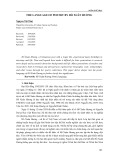

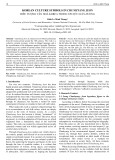

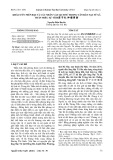
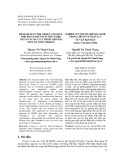
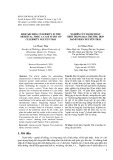
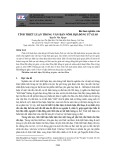
![Bộ câu hỏi trắc nghiệm Văn bản tiếng Việt [chuẩn nhất]](https://cdn.tailieu.vn/images/document/thumbnail/2025/20251127/thuynhung051106@gmail.com/135x160/24021764296609.jpg)
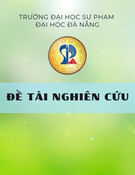

![Bài giảng Ngôn ngữ học đối chiếu Nguyễn Ngọc Chinh [PDF]](https://cdn.tailieu.vn/images/document/thumbnail/2025/20251101/vovu03/135x160/7471762139652.jpg)




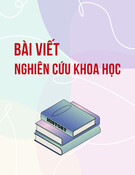
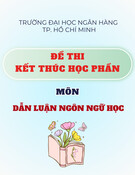

![Ngân hàng câu hỏi môn Tiếng Việt thực hành [chuẩn nhất]](https://cdn.tailieu.vn/images/document/thumbnail/2025/20251003/kimphuong1001/135x160/21861759464951.jpg)
![Bài giảng Văn học phương Tây và Mỹ Latinh [Tập hợp]](https://cdn.tailieu.vn/images/document/thumbnail/2025/20251003/kimphuong1001/135x160/31341759476045.jpg)


